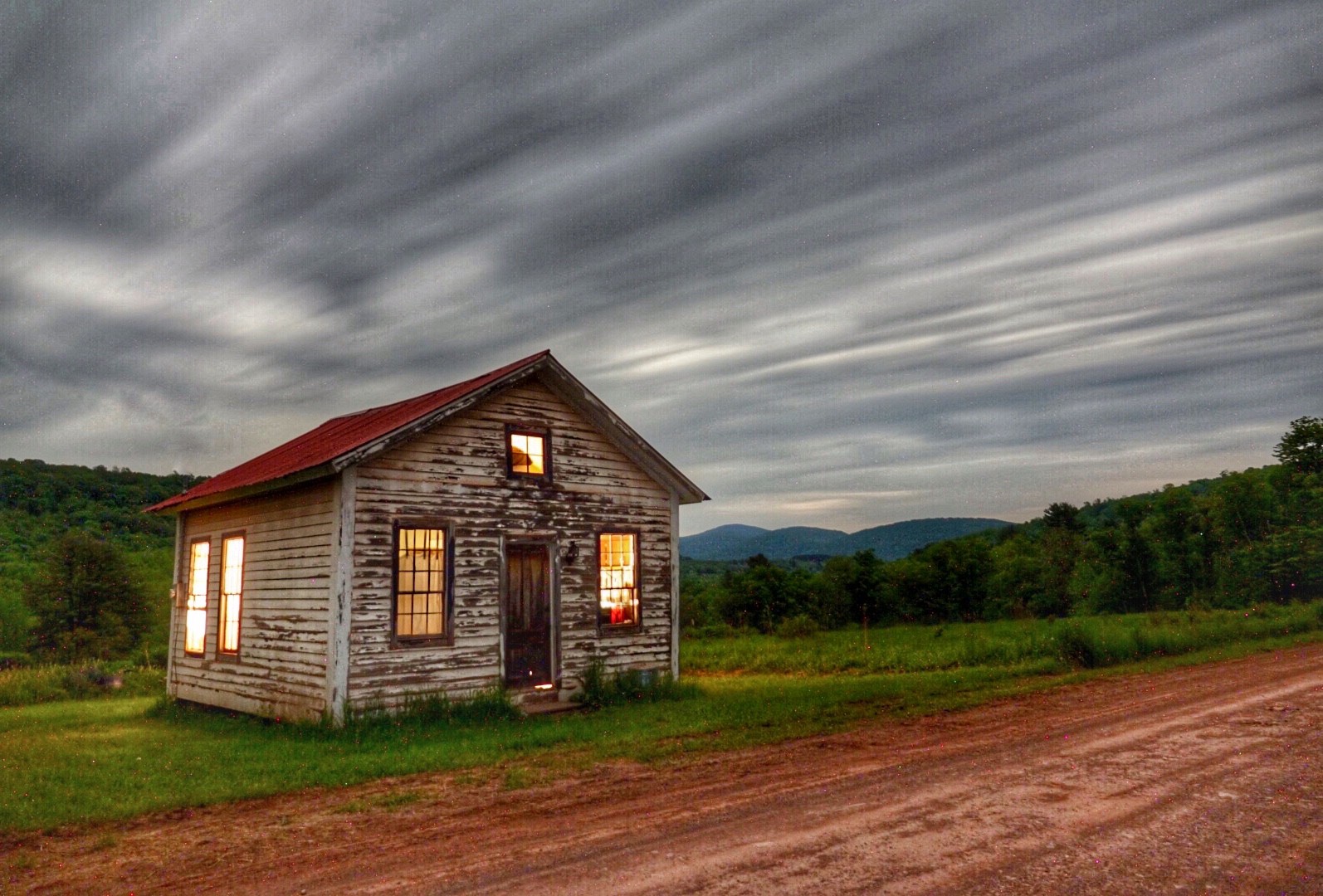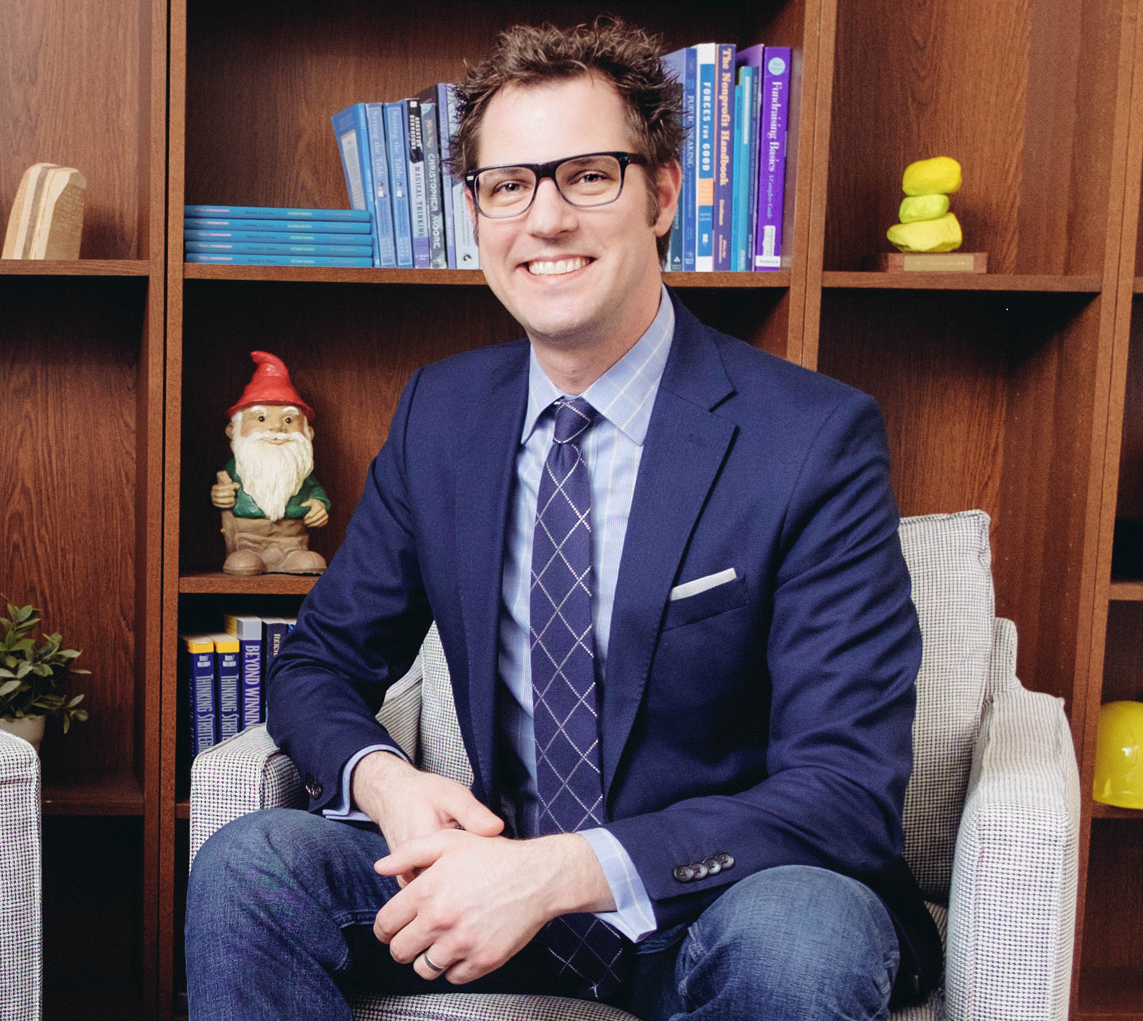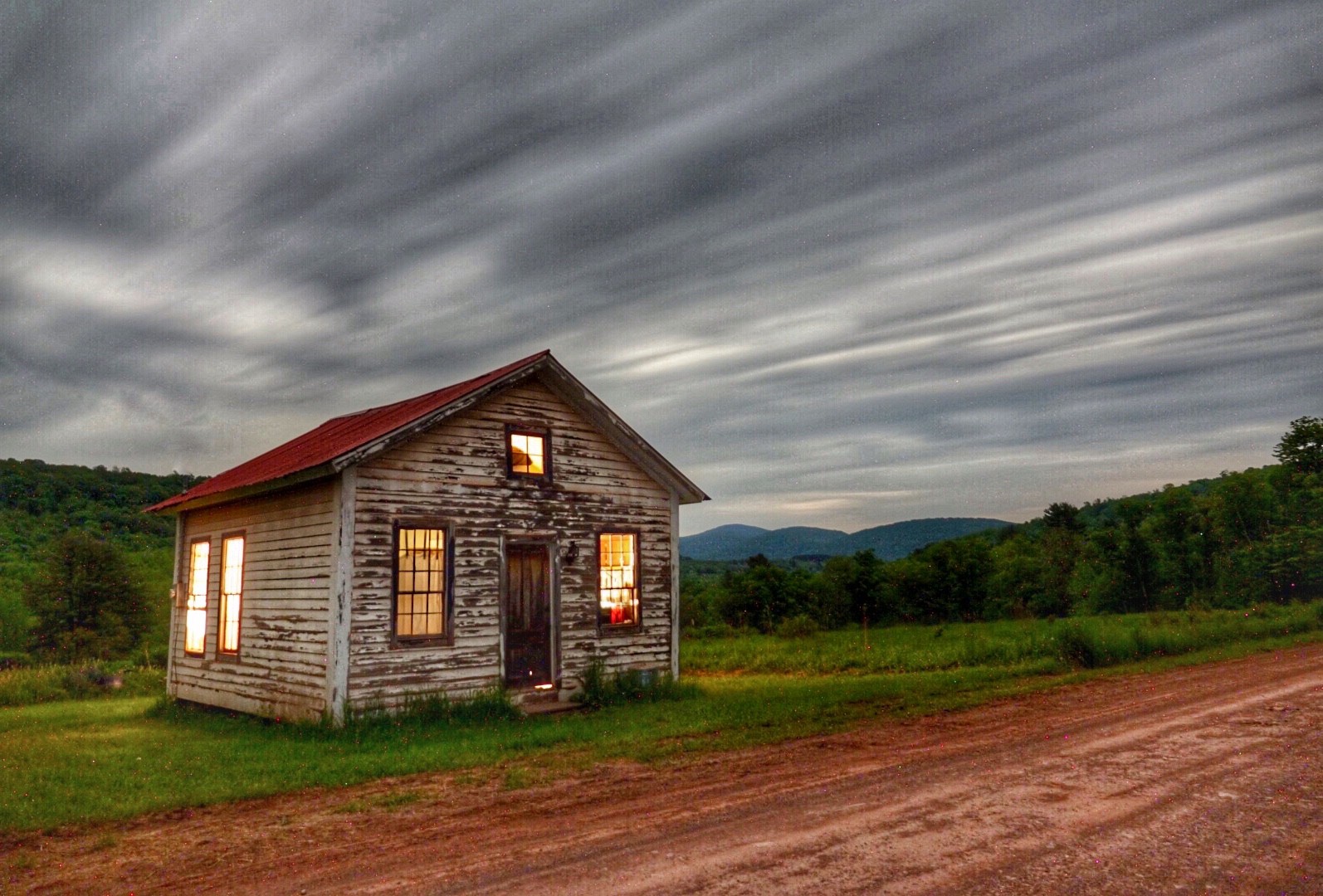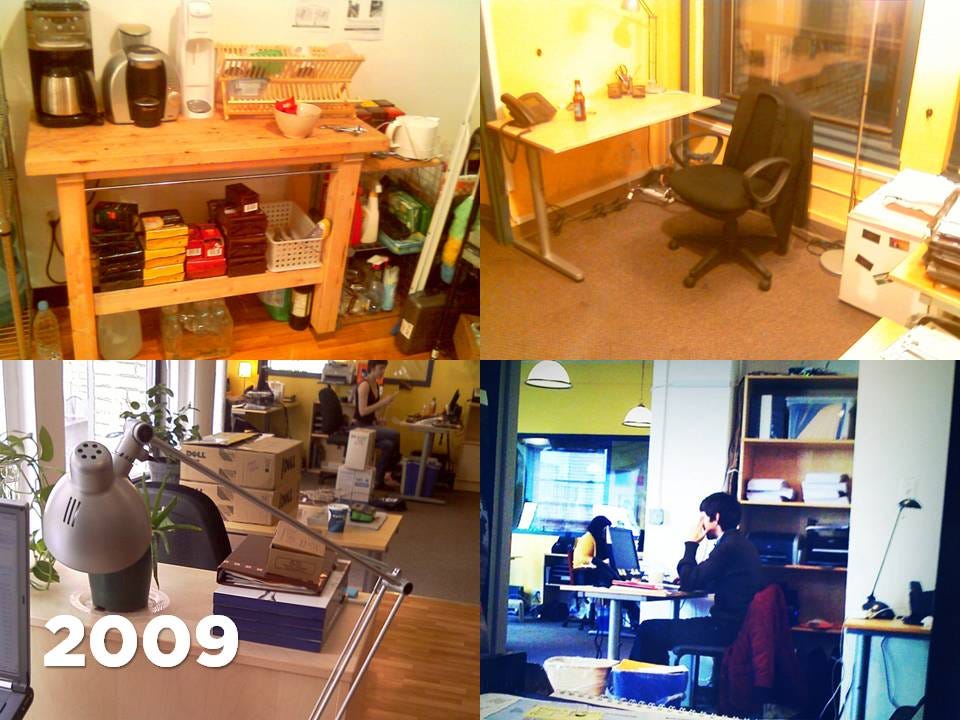Working From (Almost) Anywhere
Virtual Realities and a Fully Distributed Workplace
Fractured Atlas “Fun” Fact
Of the eight staff members currently at the Senior Director and C-level tiers, none live and work in the same state (Colorado, Indiana, Maryland, New Jersey, New Mexico, New York, North Carolina, Vermont). And more than half of our Fractured Atlas team now live in 11 U.S. states and 6 countries, with fewer than half spending any time in our sole physical office on 35th Street in New York City.
Long exposure image I captured after a productive day of writing in this former one-room school house.
Why do I mention this here? Because this is all part of our effort to create a thriving workplace — that’s entirely virtual (or distributed) — without any physical office by January 1, 2020. [Note: Our Programs and External Relations teams will be communicating more specifics about how this transition will change some of our processes. Stay tuned.]
We’ve been planning and moving towards this transition for quite some time. Our intrepid board of directors is already there with members living in four countries. Quarterly board meetings take place by Zoom video and see people joining from at least six times zones (with two people usually joining meetings from tomorrow). For our recent meeting, we had members joining at 2AM, 6AM, 8AM, 1PM, 3PM, 5:30PM, and 10PM. (That’s true commitment to an organization when you join a video call at 2AM.)
Vintage Office
The decision to transition to an entirely distributed organization didn’t come out of the blue. Like many organizations, we once had one physical office where every single staff member worked five days a week. We each had our own assigned desk with desktop computer, phone with a cord that plugged into the wall, and a few photos of friends and family. When we had meetings, everyone who needed to attend got up from their desk and walked into our tiny conference room.
Iterate & Adjust
Eventually, we started experimenting with how to structure our work and workplace. “How about one Director-level staff member tries a set work from home day once a week for a few months?” Then we evaluated it. What worked, what didn’t. Iterate and adjust. Then we experimented with two people. Then that became a standard option for Directors (a position that affords more agency in the type of work they do). Then we introduced a computer-based VoIP phone application allowing people to untether from a dedicated desk to take phone calls.
This lead to us experimenting with a work from home (WFH) day for three months with a staff member at the Associate-level (someone who primarily provides customer support for members on phone and through a web-based helpdesk application). Then, we hired our first non-NYC-based employee. Then we increased the number of Associates working from home. Then we acquired and integrated a software development company where no two engineers lived in the same state. Then we switched from desktop computers to laptops, and bought an Ikea couch and comfortable armchairs for the office. Then we hired more non-NYC-based people. This evolved over several years to bring us to where we are today. Until recently, our official WFH policy simply stated “after working with Fractured Atlas for at least a year you can then request a set WFH day.”
Join me for a stroll around our office circa 2017
Why Do We Do It *That* Way?
The journey towards becoming an entirely distributed organization started several years ago when we ran out of room and chose to renovate our office. During the run up to that renovation, we asked ourselves questions about how we used a physical space, and how that space could be designed to best support the different types of work we needed to accomplish throughout the day.
We asked things like: Why do we use a conference room? What kind of work does that type of space support? What if we didn’t have that space, how would we accomplish those things instead? What kind of environment best supports grant writing? Or talking on the phone assisting our members? How does energy and focus change throughout the day? And what conditions would increase the time we each spent in “flow”?
What does working at Fractured Atlas look and feel like in five years?
We stumbled upon a seemingly simple question that now contributes to our workplace iterating at Fractured Atlas: What do we want working here to look and feel like in five years? Contemplating this question helped us realize the leap we needed to make from maintaining a physical office to being a fully distributed organization. In its simplest form, in five years, working at Fractured Atlas doesn’t look like everyone working in the same physical office circa 2009, and certainty not one in Midtown Manhattan. If anything, the trend over the years for us has been for staff to relocate *away* from NYC rather than towards it.
As we thought about how this workplace vision intersected with our commitments to being an anti-racist and anti-oppressive organization, the transition made even more sense. It affords people rare agency to make decisions about how they want to craft their life in ways that weren’t previously possible. “You live [here] because your job is [here],” no longer would apply.
Specific City Not Required
This vision enables us to hire and retain amazingly talented people who don’t live in the same location. New York City is an expensive place to live. At Fractured Atlas, we anchor our strict fixed tier comp and benefits off of the NYC marketplace, regardless of where people choose to live (i.e., every person at a given tier is paid exactly the same regardless of how long they’ve been in that role at Fractured Atlas and irrespective of whether they live in NYC, Philadelphia, or Dallas). People are welcome to live in NYC, but they can now relocate to, say, Cincinnati, OH and potentially greatly increase their standard of living and purchasing power.
Juggling Multiple Organizational Cultures
Transitioning to entirely distributed would also eliminate a significant silo in our organization: those who work fully virtual versus those who work in HQ. It would go a long way toward “equalizing” that experience in a way that isn’t possible when a significant portion of people work together in a physical office.
How might we work to equalize the experience of working at Fractured Atlas, so everyone feels like they work for the same company rather than different experiences depending on their relationship with a physical office space?
There’s a wealth of research about how virtual work impacts employees. One particularly illuminating piece I read early on in my own journey was “Knowing Where You Stand: Physical Isolation, Perceived Respect, and Organizational Identification Among Virtual Employees.” It was co-written by friend and former Fractured Atlas board member Amy Wrzesniewski, and based on research she and her colleagues conducted. (A selection of other resources, some more anecdotally based and less scientific, are linked at the close of this piece.)
As more Fractured Atlas staff members were working virtually, we wrestled with the question about whether it was possible to “equalize” the experience for those who work fully virtual and those who work solely from HQ. Was it possible to make it feel like everyone worked for the same Fractured Atlas? Especially for those who were hired and then — even though they work closely on a daily basis — might wait upwards of a year before they meet the other members of their distributed team in 3D for the first time.
The more we dove into preparations to transition to a fully distributed organization, the more we realized that we were not trying to maintain only two different organizational cultures — one for those onsite and another for those offsite — we had created, and were trying to manage, at least five different location-related organizational cultures. We had:
- Those who worked entirely remote,
- Those who worked 5 days a week from the Fractured Atlas office,
- Teams where no two members lived or worked in the same location,
- Teams where part of the team was remote and part of the team worked from the Fractured Atlas office, and
- At least one team where — when factoring in flexible work from anywhere days, travel, vacations and sick days — they seldom had two days with the same HQ/virtual configuration.
That last item in particular exacerbated the stress, uncertainty, and anxiety of a distributed team, because you simply never knew exactly what the configuration would look like from one day to the next. And this feeling permeated at the individual, team, and organizational levels. Moving to an entirely distributed model would at least, in some ways, alleviate this stressor.
Some Staff Are Already There
It’s easy in a change initiative — particularly for those of us who are “losing” an office and our daily routines on 35th Street — to forget that we currently have an organization where more than half of our colleagues already work virtually. More than half of our coworkers have figured out how to do this well and, for them, a transition to being entirely distributed is only likely to improve their work experience.
How might their experience of working for and with Fractured Atlas change for the better? And what can we learn from our colleagues about how they’ve configured home offices and routines to thrive? What can we learn from our coworkers about how to schedule the day? Do people wear shoes when working from home? How do people replicate the positive benefits of those serendipitous in-office chats when it’s just them and maybe their pet? And, most importantly, how do you remember to eat lunch? [Our How We Work, Virtually blog series shares some of these stories.]
With So Much to Do, Why Prioritize This?
At any given time, the Fractured Atlas teams are juggling 3–5 significant, high-priority projects. Most of these focus on developing our products and services to better serve our membership. In some cases though, we focus more internally on how we approach — and can better accomplish — our work and mission.
There are several reasons why our move to be an entirely distributed organization rose to the surface:
- Changing Work Patterns. Through our regular operations, we almost by accident ended up with more than half of our team working outside of the New York office. And everyone at Fractured Atlas now works virtually at least one day a week. This leaves an office designed to support 30 people routinely with about 5 occupants on any given day.
- Finite Resources & Opportunity Costs. The ten-year lease we signed with terrific terms at the bottom of the real estate market in 2009 is quickly coming up for renewal. With finite resources and associated opportunities costs, every dollar and our related energy spent on maintaining a physical space for fewer and fewer people means we can’t use those resources elsewhere. Even moving to a smaller office still consumes a huge amount of capital and time that could be otherwise dedicated to delivering even better products and services to members, and a better working environment for staff.
- Standard of Living & Larger Applicant Pool. In not having to work and live in NYC, Fractured Atlas has access to a huge pool of terrifically talented people who otherwise might not want to live and work in NYC. For those who love their work at Fractured Atlas but no longer want to be in NYC, it means they have the agency to choose where they want to live first. And for those who love NYC? It means many are now gaining upwards of 3 hours a day in discretionary time that previously was spent commuting.
- Into the Future! When we reflected on the future of our organization, the culture we wanted to maintain, and how we wanted to create a place where people thrived, having a physical office didn’t rank high on our list of priorities or as a motivator to achieving our goals.
Think of All the Money We Won’t Save
When I mention our move to being an entirely distributed organization, many people respond by saying, “Wow, what a savings! It must be great to get rid of your rent and utilities expense!” In reality, the expense factor was almost an afterthought. (Don’t get me wrong, it was a thought, but not the one that directed us down this path.) While we will likely see some financial savings as a result of this transition, it’s not likely to be as significant as most people assume.
In exchange for rent and utilities, we’ve already incurred higher application subscription fee costs (e.g., Zoom, Dialpad, Slack, Trello). And we’ll incur increased travel and occasional coworking facility costs to address the effects that being physically isolated from coworkers introduces. Our Internet costs will also increase since we’re requiring that staff have high speed Internet connections as a work condition, and thus will be reimbursed for that monthly expense. (There are only so many video and audio calls you can do with spotty service before your coworkers and customers lose patience.)
You’ll likely be disappointed if money is the primary motivator to make this change. With any change initiative, the stronger and more substantive the underlying purpose for the change, the more ballast you have to steady the ship when it’s being tossed about on the sea of change. Why are we doing this thing? To save money — [cue sad trombone sound] — won’t inspire much. While wise resource allocation is important, it’s not usually a solid enough reason to get people to jump out of bed in the morning. Again, it’s not that it doesn’t have merit, but I bet you can drill down to a more purpose-driven answer than “save money.” For us, it’s about continuing to craft a workplace where people can thrive, and one that enables us to better serve our members. And *that’s* why we went about making the change.
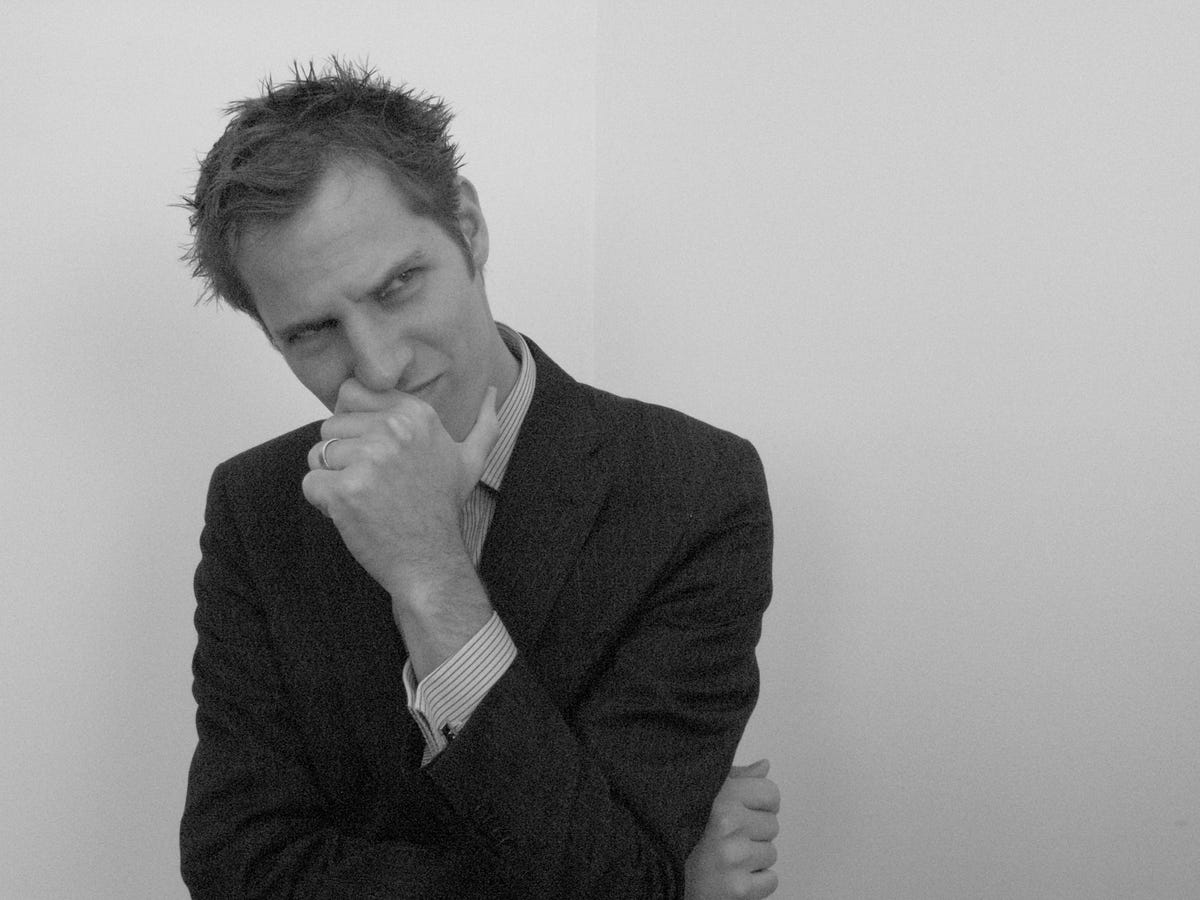 Younger me, skeptical of Work From Anywhere arrangements.
Younger me, skeptical of Work From Anywhere arrangements.
I Haven’t Always Been a Fan
Over my decade at Fractured Atlas, I’ve seen us grow from a handful of people to nearly 40. I was part of the group that moved us, box by box, into our current office space that afforded us, at the time, *way* more space than we needed. I was there when we renovated it because we had too few places to work in an always-packed office. And I’m here now, almost as it was in 2009, with just a handful of people in a way too empty space. It’s beautiful and convenient and has colleagues in 3D that I thoroughly enjoy working with.
But lest you think I’ve always been a Work From Anywhere (WFA) evangelist, for many years I feared that in us being more virtual we’d lose the soul of what it meant to be Fractured Atlas. We’d drain the culture that made us, well, us.
Worried that more people working remote will change the company culture? For us, it did. It also allowed us to hire incredible people we otherwise wouldn’t have been able to work with. It introduced flexibility with how and when people do work so that they had more agency in their life. And, maybe most importantly, it has allowed us to serve our members in more and different ways.
What I realized a few years back was, just as I’m no less me than I was 25 years ago, I’m me, but different. Same with you. If we look at humans on a cellular level, over 25 years, most of the cells in our bodies have been replaced. But somehow, we’re still us. Organizations are similar. When I was afraid of us losing our organizational culture, I didn’t consider the culture we were building as a direct result of our organizational culture. The thing we were building was the thing we were building because of the thing we built. (Yep, I know, slightly convoluted, but thanks for staying with me there.) The DNA-level stuff about Fractured Atlas was still there, but now with increased resiliency and flexibility and adaptability as we cultivated a place where we didn’t all physically work in the same space.
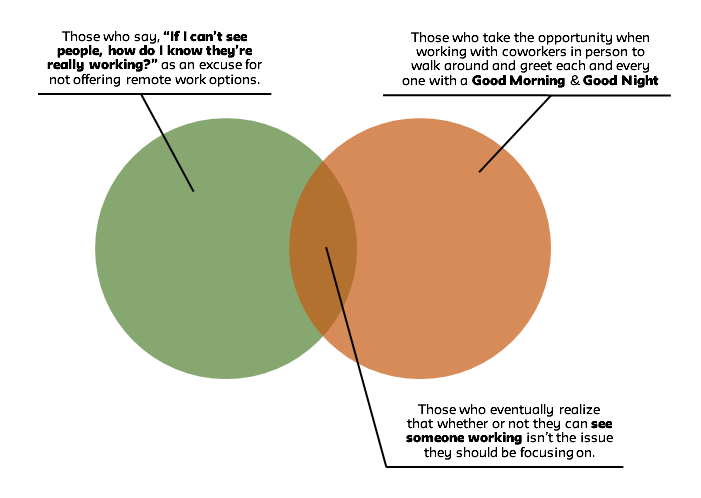 Experiment, iterate, and be purposeful about the kinds of things you can do in a space.
Experiment, iterate, and be purposeful about the kinds of things you can do in a space.
Also, don’t forget to be a human.
Crafting Your Own Experiment
Like much of what each one of us does in life, someone has figured out how to solve it, somewhere. It’s the proverbial “solved problem.” Part of our iterative and creative process at Fractured Atlas leverages those learnings. (It’s why we’re constantly reading, listening, and looking across sectors for case studies, different perspectives, and solutions.) And then we, in turn, feel a responsibility to give back by sharing what works and doesn’t work in our own approaches. There are 7 *billion* of us on this Earth learning and doing. Let’s not recreate the wheel if it’s not necessary.
When it comes to alternative work arrangements, you certainly don’t need to give up your office entirely to ask: What do we want work to look and feel like here in five years? With those answers in mind though, begin to experiment. Here’s what’s comforting to me about this: plenty of people have come before us and have figured out ways to address even the most complicated of these issues. We get to leverage those learnings to create an environment that fits us and our organization best and how we want to work.
If you’re not sure where to start, here’s a quick list of some helpful places to get you going:
- Remote Only
- Remote: Office Not Required
- The Remote Work Report
- 6 Rules To Live By When You Work In An Office But Have Remote Team Members
- Making Virtual Teams Work: Ten Basic Principles
- Why Virtual Teams Have More Conflict
Tools to Try
Even if you’re not convinced that people should work outside of your office, you can start to experiment and iterate with tools to improve workplace communication, transparency, and productivity.
Introducing communication tools like Slack or Flowdock will eliminate countless email threads when all you need to do is have a quick chat between a few people. Use a Zoom video for meeting the next time you’re trying to coordinate a meeting with someone offsite. (Think that “quick chat over a cup of coffee.”) Learning how to facilitate and participate in a video conference call is a professional skill people need to develop, just like the proper format for a business letter.
Try using a whiteboarding tool likely Mural to replace everyone standing by a physical board. Being intentional about using a tool like Mural has the added benefit of keeping you focused on the task at hand and often eliminates side conversations that take you off track or burn valuable time. Track projects and priorities in tools like Trello. (Pro tip: We use it to compile and manage meeting agendas, and then track our action items.)
Then there are frameworks like OKRs to create transparency, alignment, and accountability around the work that everyone is doing. Objectives and Key Results (or OKRs) are a huge asset when incorporating work from anywhere arrangements. They help build the trust necessary for high performing teams. Now I don’t need to physically see you “working” in an office to know that you’re making progress on our previously discussed and approved projects. Whatever you choose, just start experimenting and iterating.
Fractured Atlas’s Associate Director, People Operations Nicola Carpenter delves into Project Blue Whale, our transition to being a fully distributed organization.
Where Does This Leave Us
What will it look and feel like to work at Fractured Atlas in five years? I’m not entirely sure. I’d be lying if I said that I had a clear idea. What I do know is that we have a sense for what it might look like and are making directionally-correct iterations towards that goal. In the end, the important part here is making sure that what we do today sets up Fractured Atlas of the future with the things it will need to be successful in service to our mission then.
On a practical front, we continue to work through Project Blue Whale (as our coworker Nicola has dubbed this in the plan outlining each stage of this transition). Each day brings new, fun questions to wrestle with. How and where do we receive mail? How do we deposit checks, and cut checks? What’s our corporate address for tax forms when we don’t have an office? How do we get three “wet” signatures on this form when everyone lives in a different country? How often and where do we meet coworkers in 3D? Where do we store spare equipment like laptops?
However we end up answering these questions, it will be done intentionally as we work towards a future of Fractured Atlas that best supports our coworkers, mission, and members.
Want to chat more about “the how” of exploring alternative work arrangement? Feel free to connect with Fractured Atlas’s People team during our free HR office hours.
About Tim Cynova
Tim wears a multitude of hats, all in service of creating anti-racist workplaces where people can thrive. He currently is co-CEO of Fractured Atlas (an entirely virtual organization with staff spread across multiple states and countries) and a Principal of the consulting group Work. Shouldn't. Suck. He serves on the faculty of Banff Centre for Arts & Creativity and The New School teaching courses in People-Centric Organizational Design; he's a trained mediator, and a certified Senior Professional in Human Resources (SPHR). Earlier in his career, Tim was the Executive Director of The Parsons Dance Company and of High 5 Tickets to the Arts in New York City, had a memorable stint with the Cincinnati Symphony Orchestra, was a one-time classical trombonist, musicologist, and for five years in his youth he delivered newspapers for the Evansville, Indiana Courier-Press. Also, during a particularly slow summer, he bicycled 3,902 miles across the United States.
